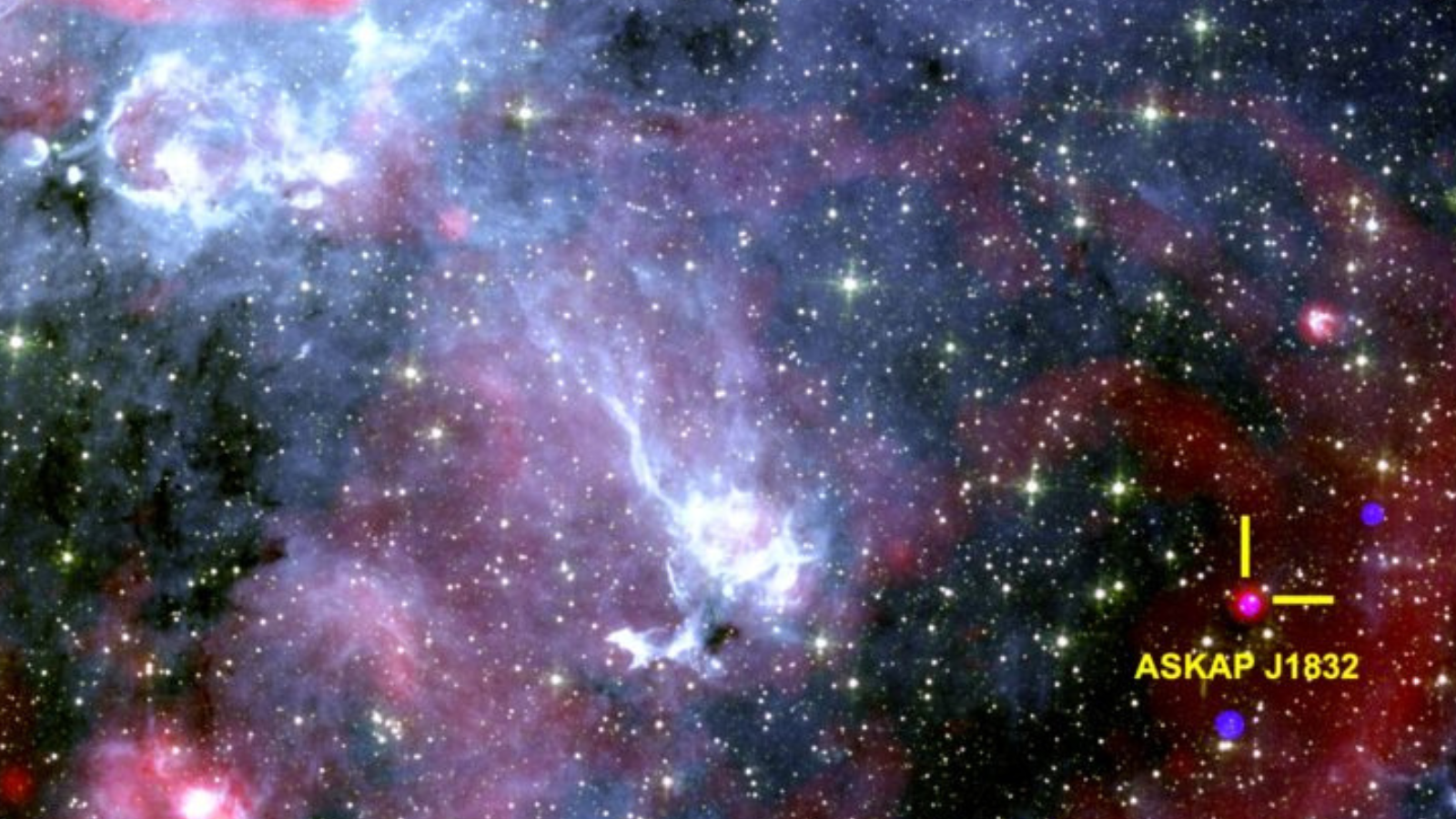Blue Origin just took another big step toward human spaceflight.
The company, which is run by Amazon.com founder Jeff Bezos, launched its first upgraded New Shepard spacecraft for astronauts, the RSS First Step, on an uncrewed suborbital test flight from West Texas today (Jan. 14).
"The success of this flight puts us one really big step closer to flying astronauts," said Blue Origin's Ariane Cornell, director of astronaut and orbital sales, during a live webcast. "There's going to be a lot of fun ahead in 2021."
New Shepard lifted off at 12:18 p.m. EST (1718 GMT), and its two elements — a rocket and a capsule, both of which are reusable — aced their landings shortly thereafter. The booster came down for a powered, vertical touchdown in its designated landing zone near the launch pad, and the capsule then settled down softly under parachutes a short distance away, raising a plume of desert dirt about 10 minutes after liftoff.
The New Shepard capsule reached a maximum altitude of 350,827 feet (106,932 meters), according to Blue Origin. That's about 66 miles (107 kilometers) up, above the traditionally recognized 62-mile (100 km) border of space.
"Everything looks to have gone perfectly today," Cornell said.
Related: Blue Origin's amazing NS-11 New Shepard test flight in photos
Get the Space.com Newsletter
Breaking space news, the latest updates on rocket launches, skywatching events and more!

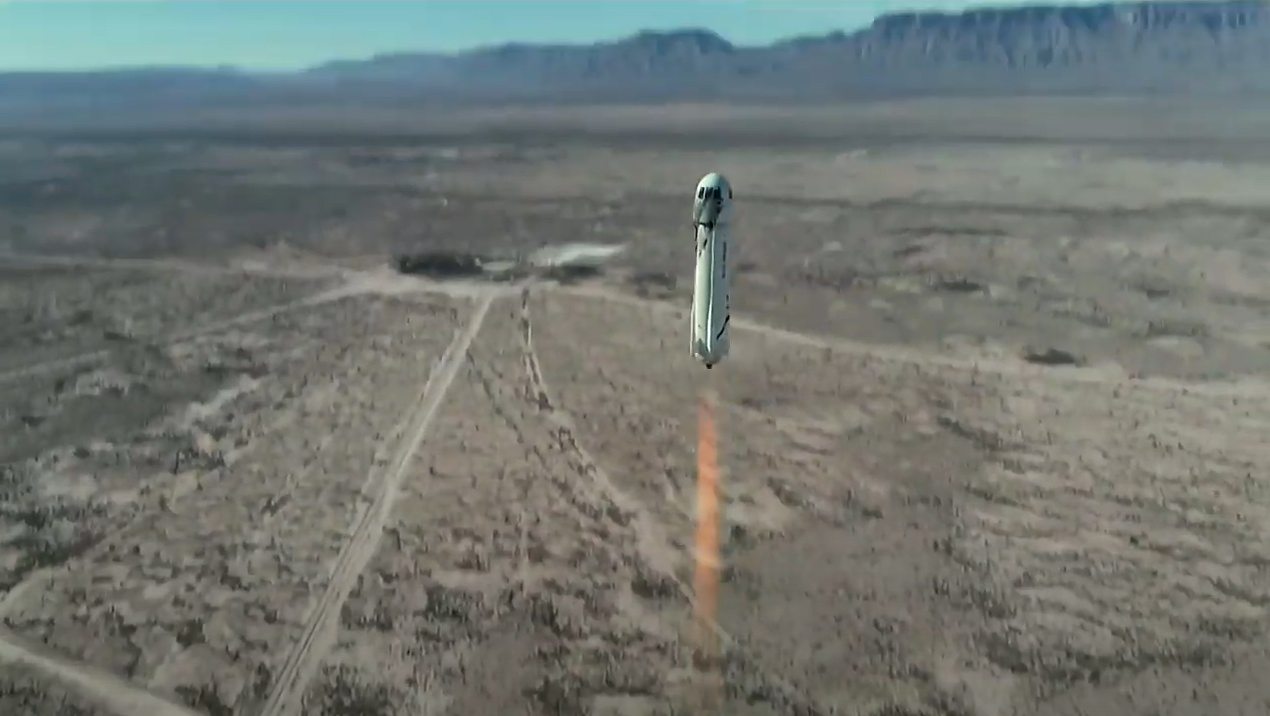
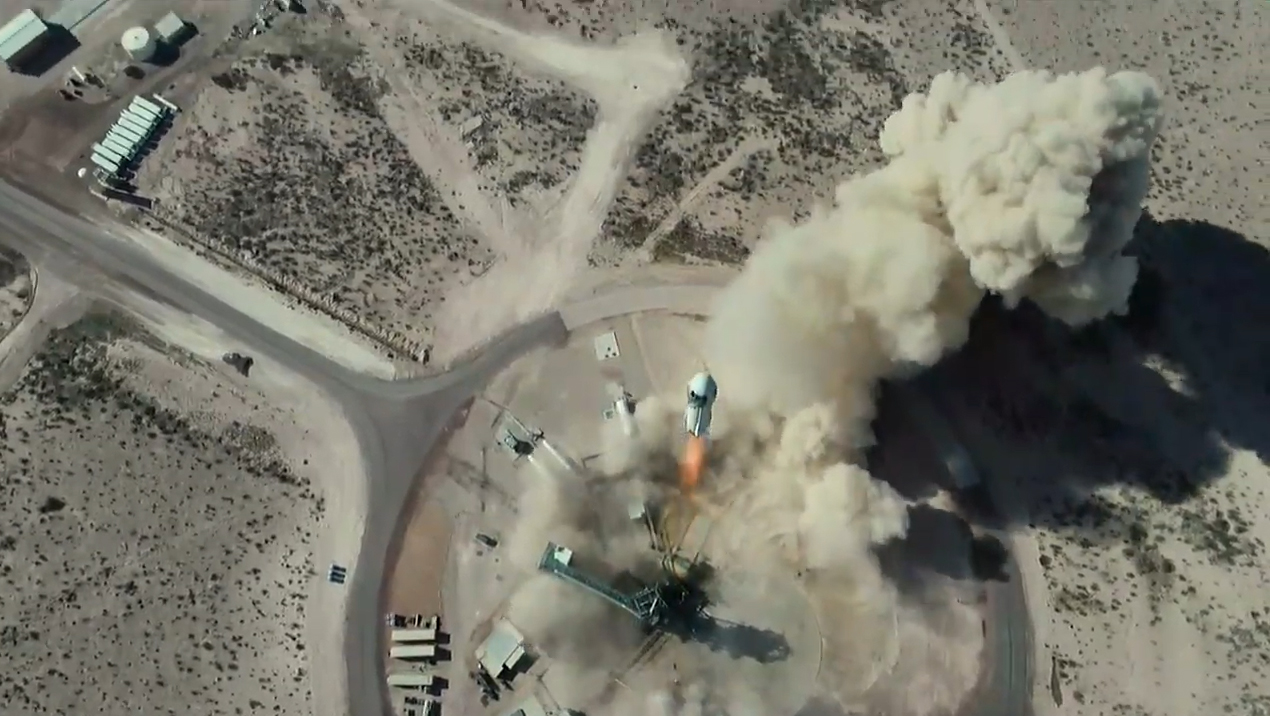
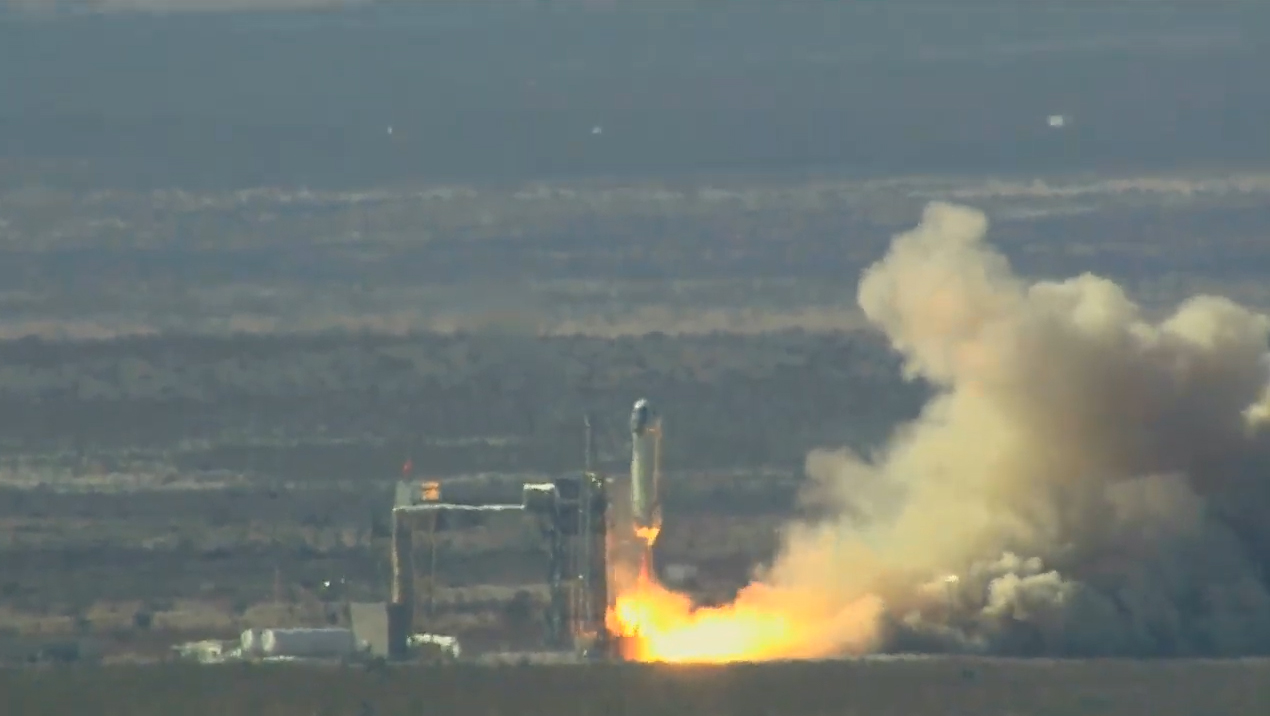
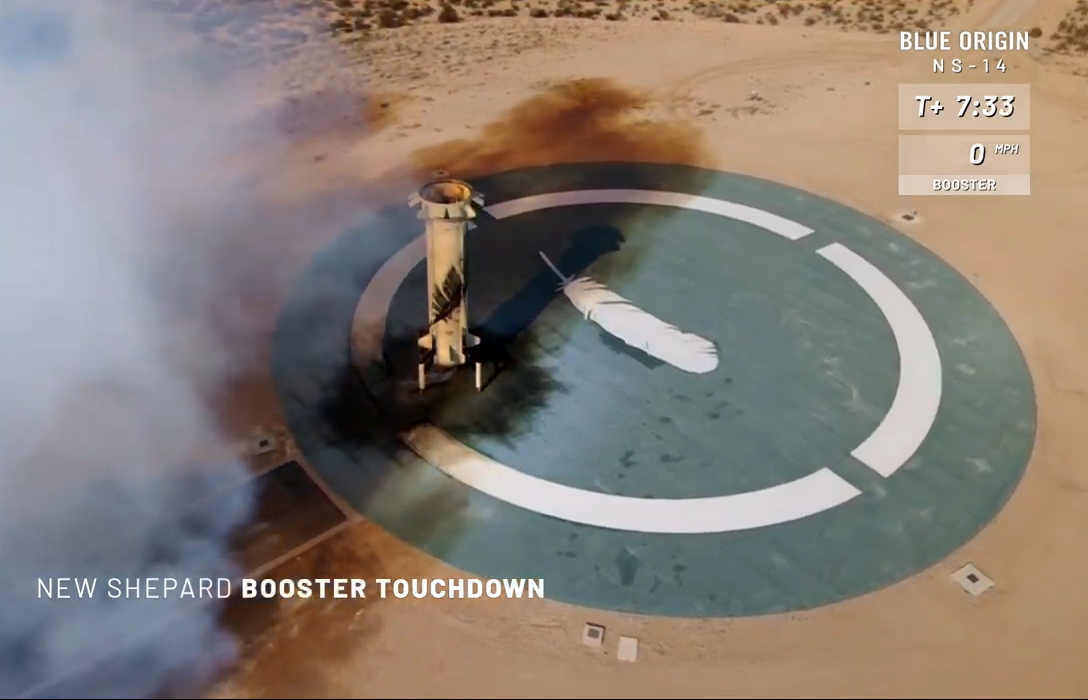
This test flight, the 14th overall for the New Shepard program, was a special one, featuring a booster and capsule that were both brand-new. (The previous mission, which flew in October 2020, involved a New Shepard vehicle that had already flown six times before.) Blue Origin named the new capsule the RSS First Step, with RSS standing for "Reusable Space Ship."
The new capsule is "outfitted with upgrades for the astronaut experience as the program nears human spaceflight," Blue Origin representatives wrote yesterday (Jan. 13) in a description of the mission.
"The upgrades include improvements to environmental features such as acoustics and temperature regulation inside the capsule, crew display panels and speakers with a microphone and push-to-talk button at each seat," they wrote. "The mission will also test a number of astronaut communication and safety alert systems."
The capsule features six seats, they added, one of which was occupied today by "Mannequin Skywalker," an instrument-laden dummy that has flown on previous New Shepard test missions.
Today's mission also carried aloft more than 50,000 postcards, some of them in Mannequin Skywalker's pockets. The postcards were submitted by students around the world via Blue Origin's nonprofit organization, Club for the Future, which organized such efforts on two previous New Shepard test flights as well.
Blue Origin is developing New Shepard to carry people and payloads to suborbital space and back. Many scientific experiments have flown on the vehicle's test missions so far, but New Shepard has yet to launch a person to space.
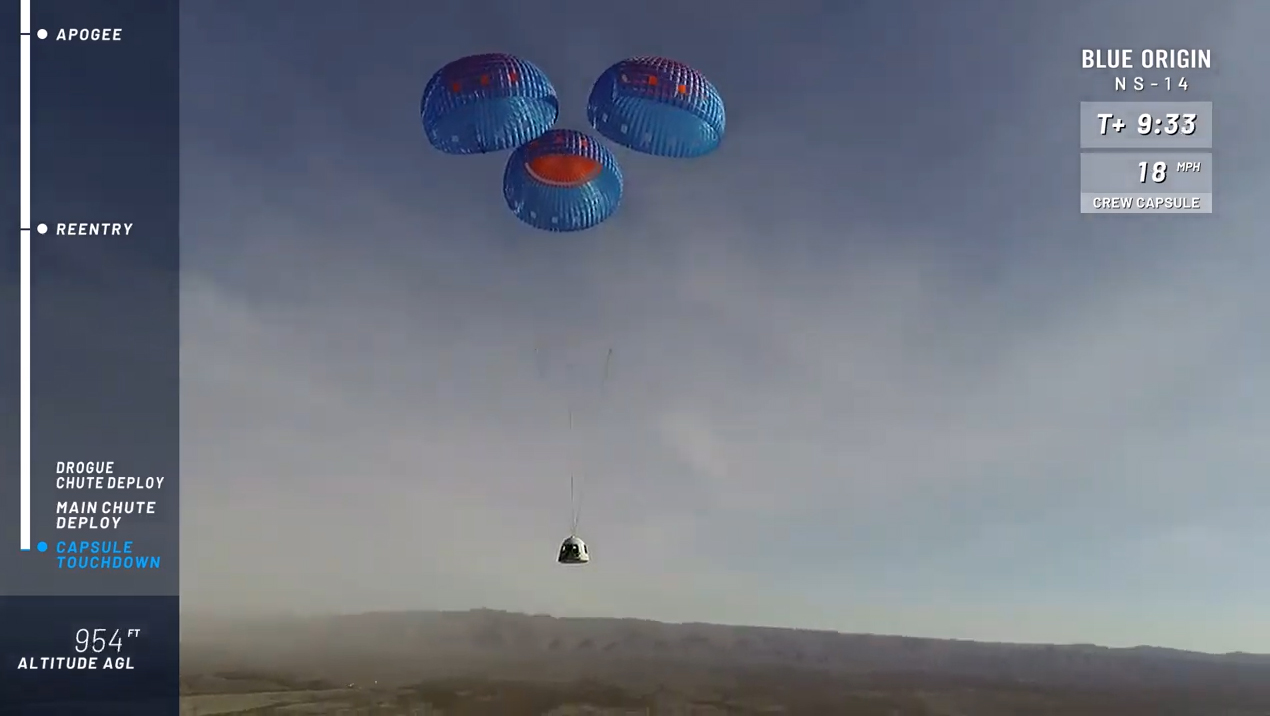
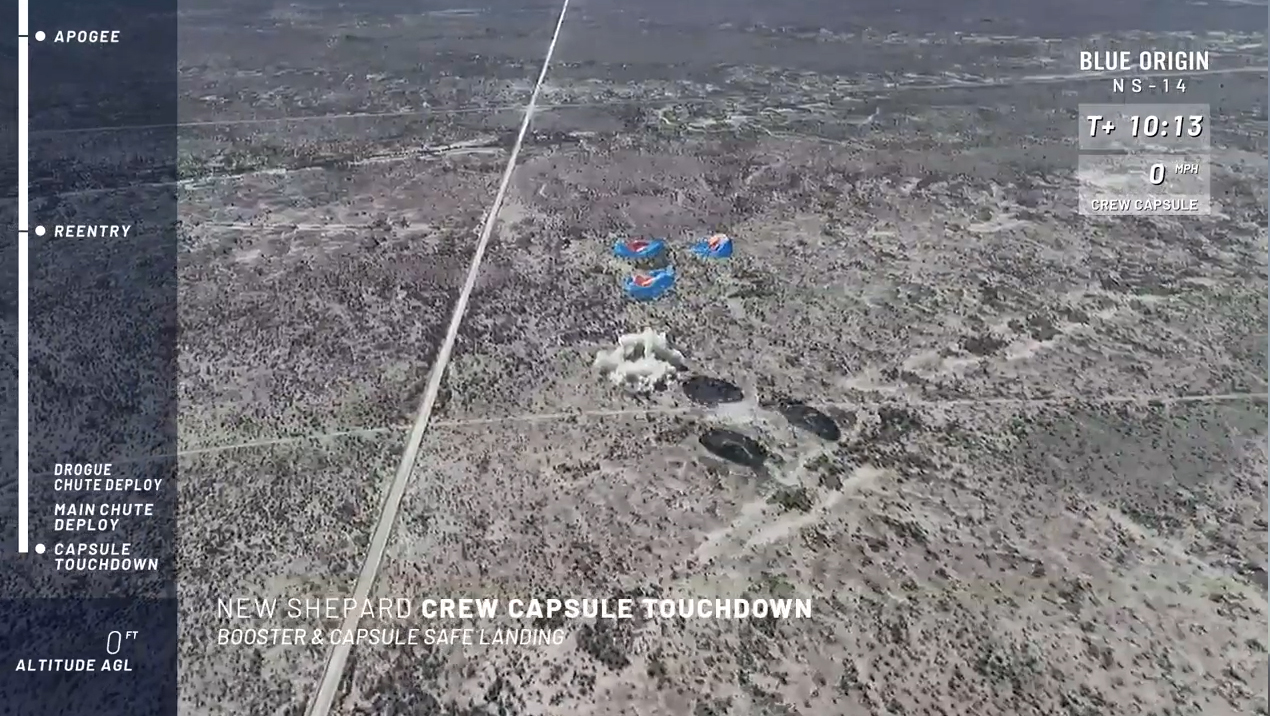
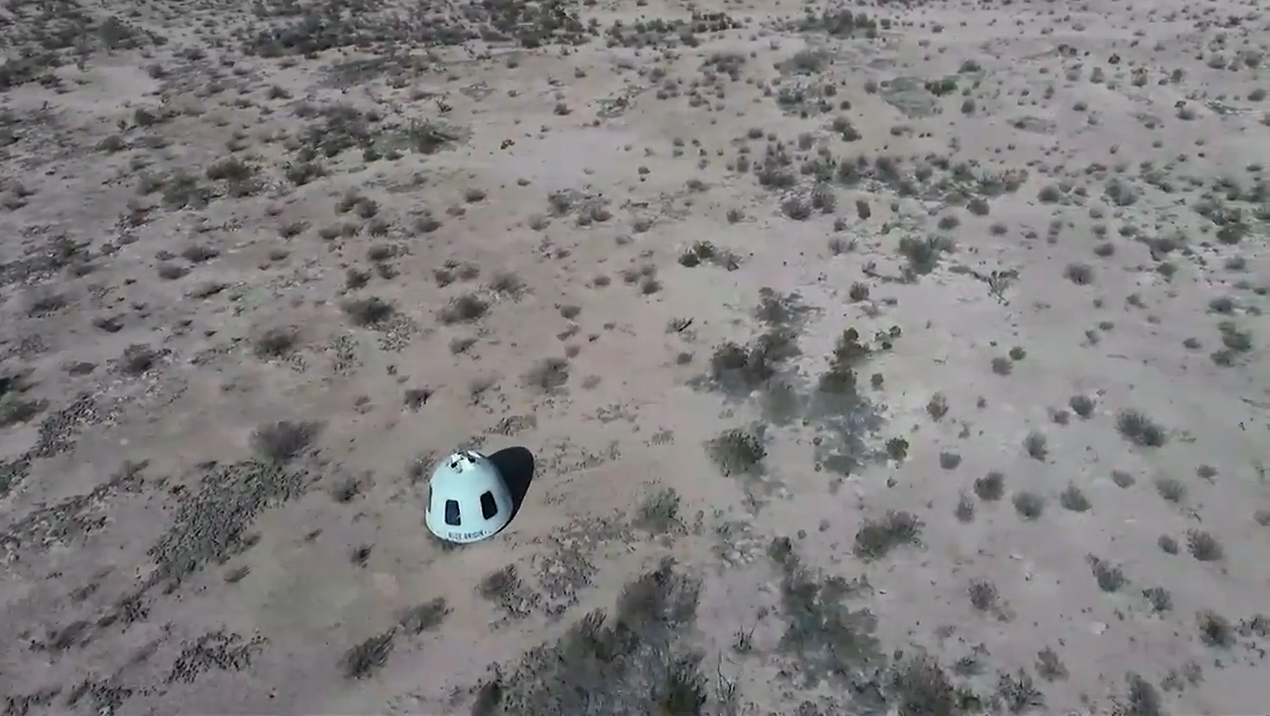
Blue Origin isn't the only high-profile company in the suborbital space-tourism business. Virgin Galactic, part of Richard Branson's Virgin Group, is developing a piloted space plane called SpaceShipTwo to take paying customers to the final frontier.
The latest SpaceShipTwo vehicle, known as VSS Unity, has reached space on two test flights, in December 2018 and February 2019. Unity attempted its third spaceflight last month but was foiled by a computer-connection issue. The space plane and its two pilots landed safely.
Mike Wall is the author of "Out There" (Grand Central Publishing, 2018; illustrated by Karl Tate), a book about the search for alien life. Follow him on Twitter @michaeldwall. Follow us on Twitter @Spacedotcom or Facebook.
Join our Space Forums to keep talking space on the latest missions, night sky and more! And if you have a news tip, correction or comment, let us know at: community@space.com.

Michael Wall is a Senior Space Writer with Space.com and joined the team in 2010. He primarily covers exoplanets, spaceflight and military space, but has been known to dabble in the space art beat. His book about the search for alien life, "Out There," was published on Nov. 13, 2018. Before becoming a science writer, Michael worked as a herpetologist and wildlife biologist. He has a Ph.D. in evolutionary biology from the University of Sydney, Australia, a bachelor's degree from the University of Arizona, and a graduate certificate in science writing from the University of California, Santa Cruz. To find out what his latest project is, you can follow Michael on Twitter.
